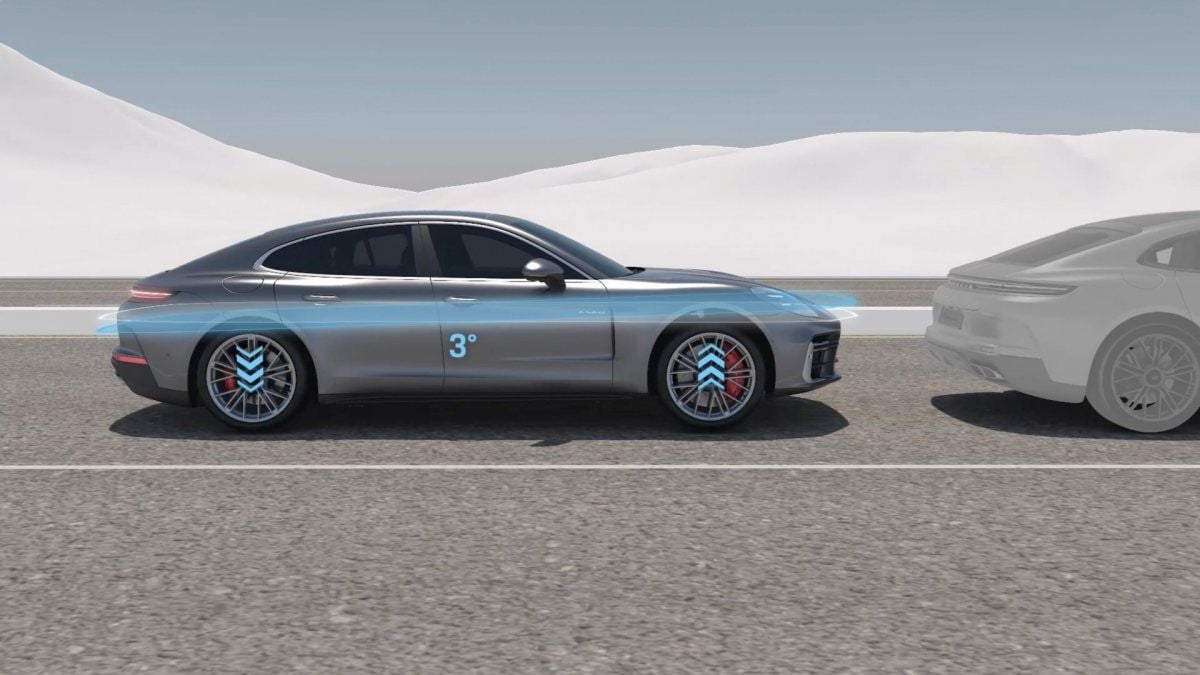Remember when those crazy French folks at Citroen basically reinvented the wheel, I mean suspension system with the DS's otherworldly hydro-pneumatic suspension? The one they'd cheerily demo by driving on three wheels? Call it a marketing gimmick, but that was one solid party trick. Well, buckle up folks, because the auto industry is back with a vengeance, and this time, it's Porsche leading the charge in chassis and suspension tech.
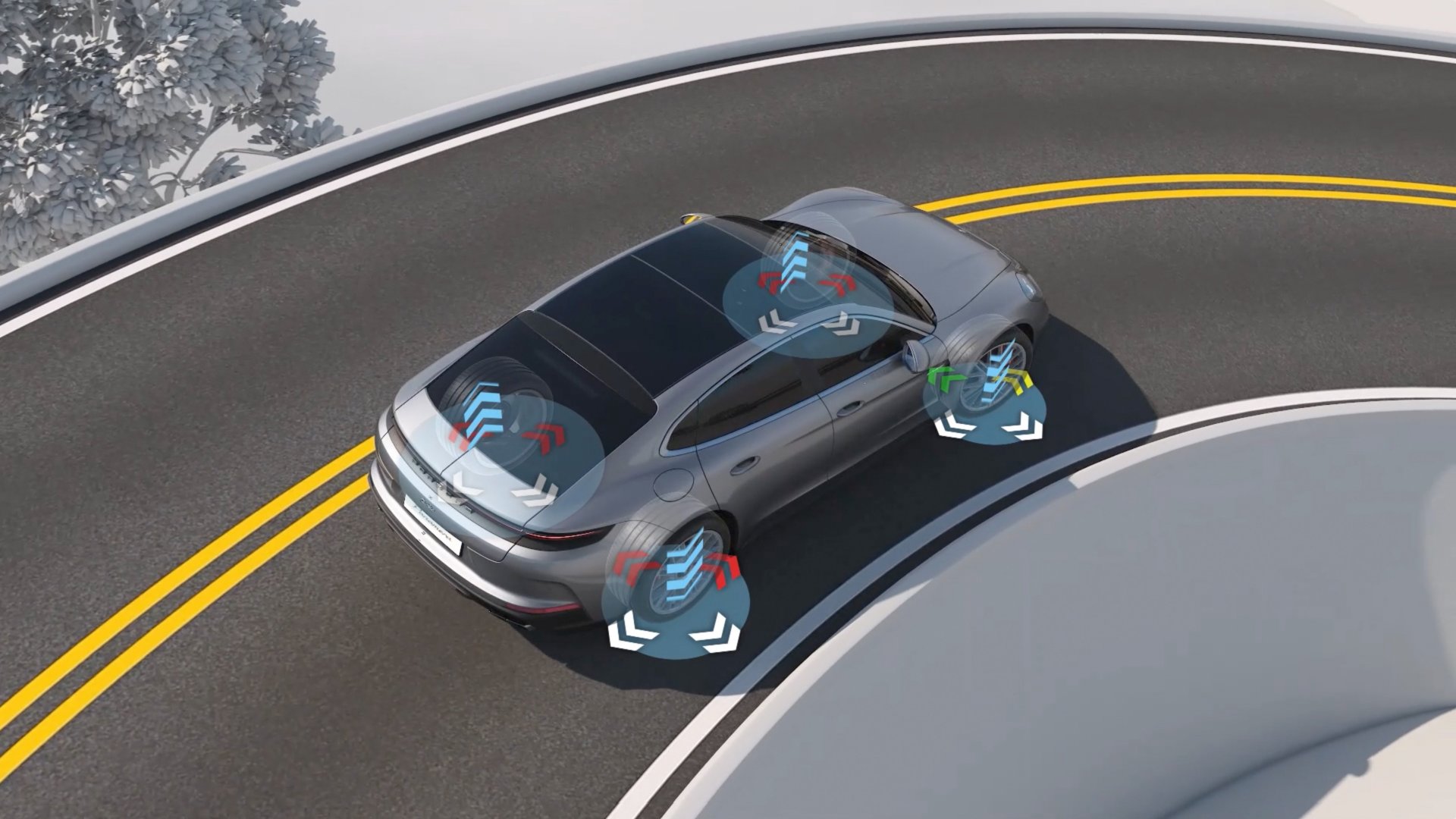 How Porsche Active Ride Works
How Porsche Active Ride Works
Porsche calls their new system 'Active Ride', and let's just say it's not your grandpa's air suspension setup. At its core, it's a two-chamber air suspension system teamed up with active dampers that feature two independently controlled valves – one for compression and one for rebound. Unlike traditional systems with anti-roll bars, all the body control is handled through these crazy dampers. Why's this important? Because now you can do things like this:
- The Flat Stanley: Using a 400-volt electrical system (so only on E-Hybrid Panameras), Porsche's engineers can literally push and pull on each wheel, making the car impervious to bumps, potholes, or sudden dips. It's the automotive equivalent of those hydraulic lowriders, but aimed at making you feel like you're floating across a freshly paved runway.
- G-Force Foiler: Want to feel the Gs when you hit the brakes? The system can let the car dive. Rather take hard turns without spilling your latte? Active Ride can make the car lean into the corner, reducing the force on you and your passengers.
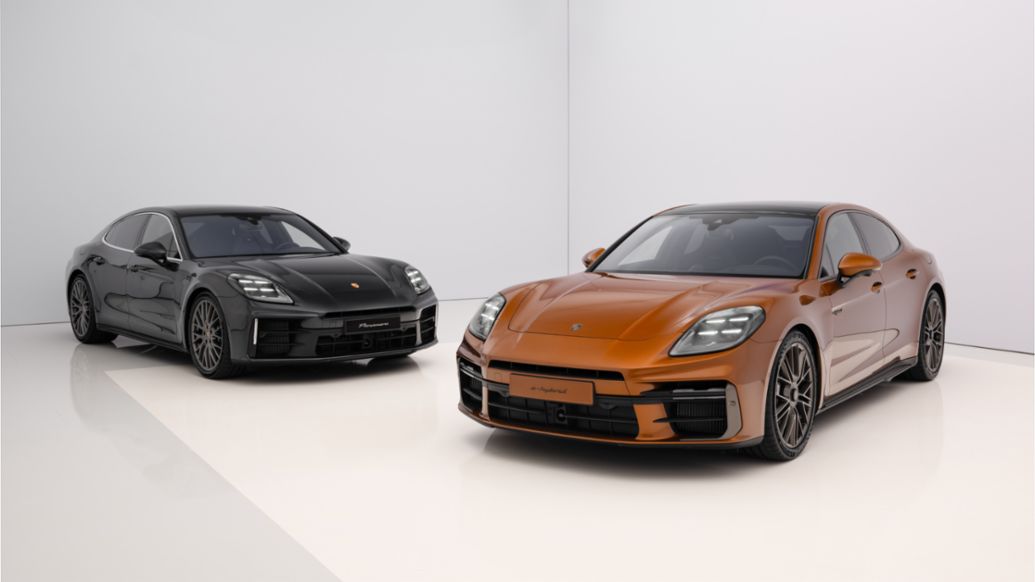 The Demo that Blew Minds
The Demo that Blew Minds
Porsche, being Porsche, wasn't content with just talk. During the third-gen Panamera's demo, they rigged up a Panamera's suspension to the gyro sensor of a phone. The results? The car became an extension of the device, mirroring its movements in real-time. Mind. Blown. They also pitted a regular Panamera against one with Active Ride over harsh rumble strips, and the difference in body movement and stability was night and day.
But Why Now? The EV Connection
You might be wondering, why haven't we seen this kind of crazy suspension tech before? The answer lies in a little thing called electricity. Modern mild hybrids, strong hybrids, and pure EVs now run higher voltage systems – sometimes as high as 400+ volts.
This massive power reserve is what makes systems like Porsche's Active Ride possible. Traditional 12-volt systems just can't provide the juice needed to make these suspension systems work effectively. Even crazier systems are on the horizon, like the super-advanced tech found in vehicles like BYD's Yangwang U9.
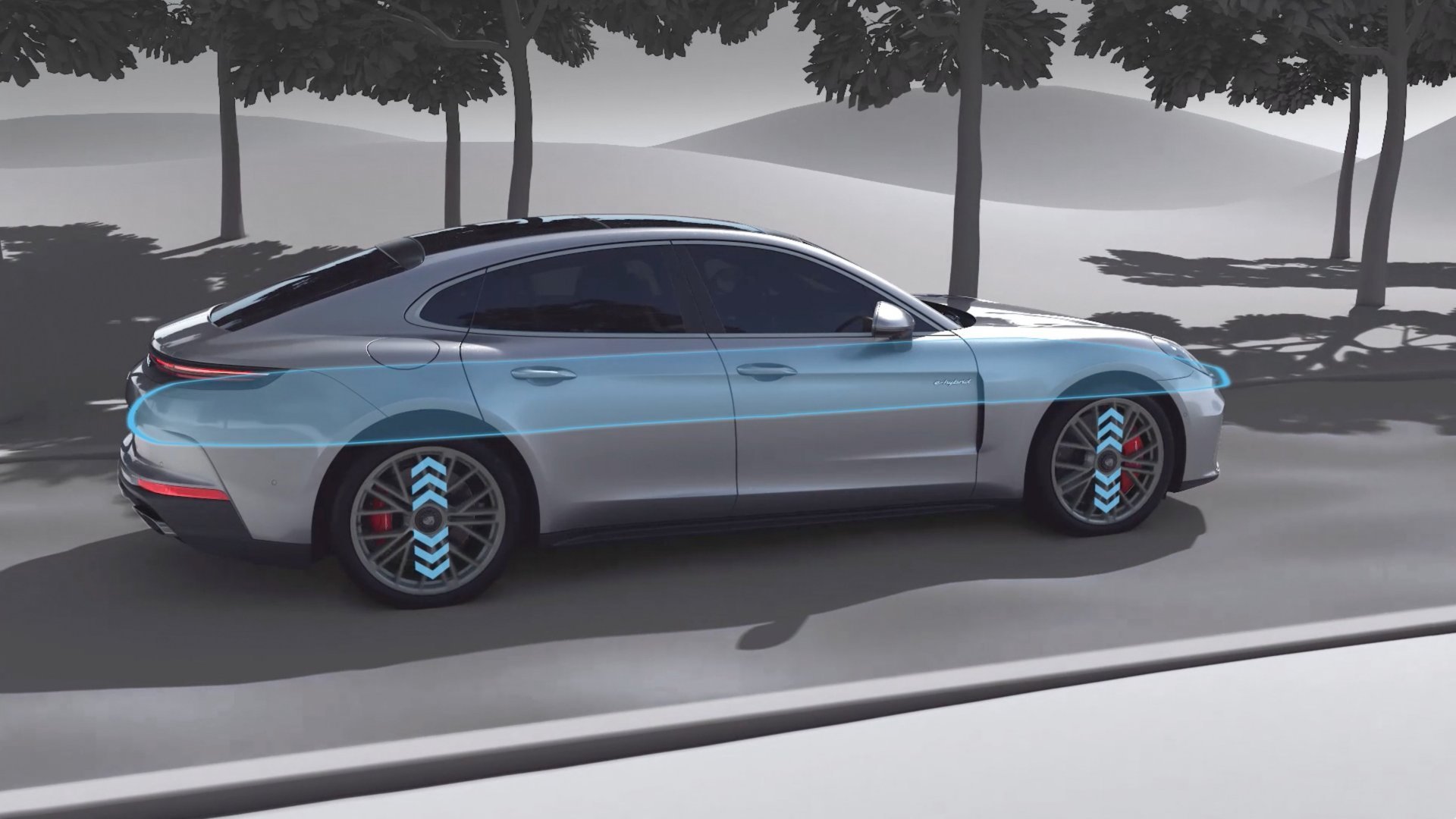
Beyond Traditional Coilovers: Porsche and the Rise of Active Suspension
While Porsche's new Active Ride suspension steals the show with its innovative approach, it's important to acknowledge it exists within a growing landscape of active suspension technologies. This revolution isn't happening in a vacuum, and Porsche's system takes inspiration and learnings from previous attempts to redefine ride comfort and handling dynamics.
One such example is the visionary project undertaken by Bose in the early 2000s. Their electromagnetic suspension concept aimed to revolutionize the way cars handle bumps and imperfections. Imagine replacing traditional shock absorbers and springs with powerful electromagnetic actuators at each corner. This futuristic setup promised lightning-fast responses to road irregularities, delivering an unparalleled sense of isolation and control. Test drives reported a sensation of gliding over even the harshest surfaces – a true testament to the concept's potential.
However, the Bose system faced significant hurdles. The complexity of the design, with powerful linear motors, a multitude of sensors, and processing power rivaling a small data center, resulted in a system that was prohibitively expensive, power-hungry, and added substantial weight to the vehicle. While a few Lexus LS sedans were reportedly equipped with prototypes, the technology never reached mass production.
Fast forward two decades and the key limitations that plagued Bose's project have begun to melt away. The rise of electric vehicles (EVs) with higher-voltage electrical systems directly addresses the power demands of complex suspension systems like Porsche's Active Ride. Additionally, advancements in electric motors and actuators have made them smaller, lighter, and more efficient, allowing for practical integration into production vehicles. Finally, the processing muscle required for self-driving car technology is readily available, making it possible to handle the intricate calculations needed for real-time suspension adjustments.
While Bose's electromagnetic suspension may not have become mainstream, it established a groundbreaking blueprint for the future of suspension technology. Porsche's Active Ride, along with systems like BYD's DiSus and Nio's Sky Ride, are the spiritual successors to this pioneering concept.
The Active Suspension Arms Race: Porsche, BYD, Nio – A Tale of Two Philosophies
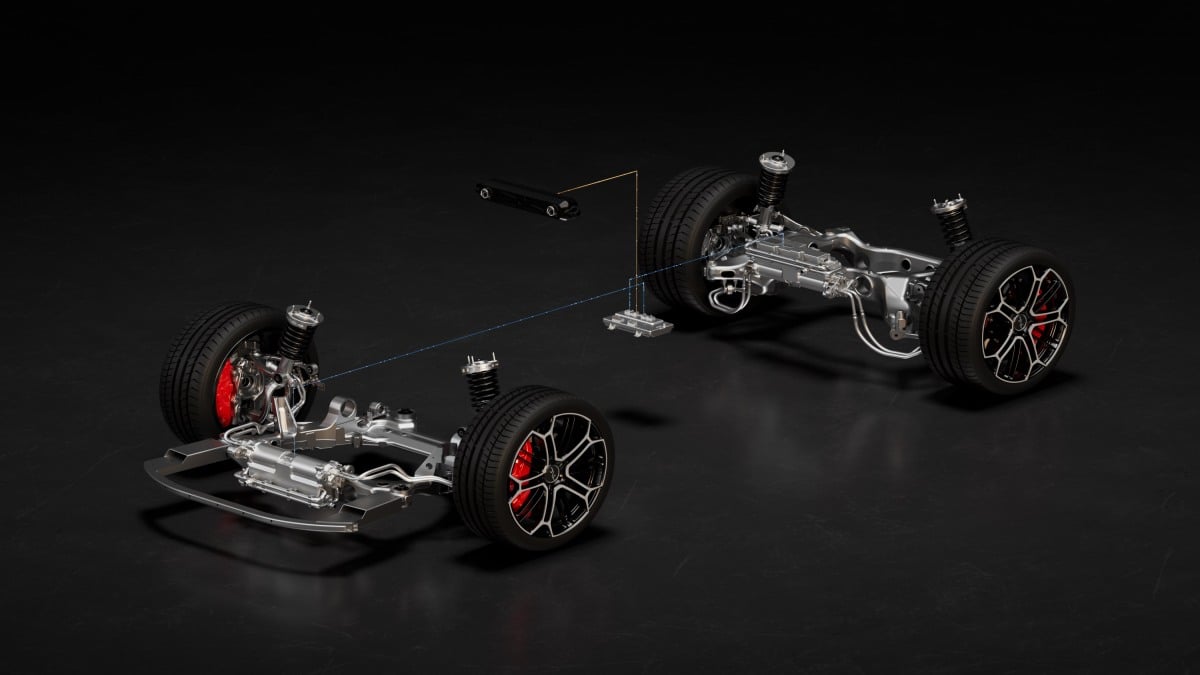
Porsche's Active Ride stands out for its fully active nature, offering unmatched control over a vehicle's body movements. Unlike adaptive suspension systems that react to road conditions, Porsche's system actively controls each damper independently, providing exceptional driving comfort and performance in various situations. This eliminates the need for traditional anti-roll bars, further enhancing body stability and handling. Additionally, features like dynamic wheel load distribution, dynamic ground clearance, and active cornering dynamics position Porsche at the forefront of active suspension innovation.
BYD's approach with their DiSus system takes a more dramatic route. Showcased in the audacious Yangwang U9 electric hypercar, DiSus is designed to push the boundaries of physics. While Porsche focuses on exceptional comfort and handling, BYD prioritizes defying expectations. Their most advanced version, DiSus-X, boasts active dampers on steroids, allowing the U9 to perform feats like a mind-bending "crab walk" mode and even maintain control with a missing wheel.
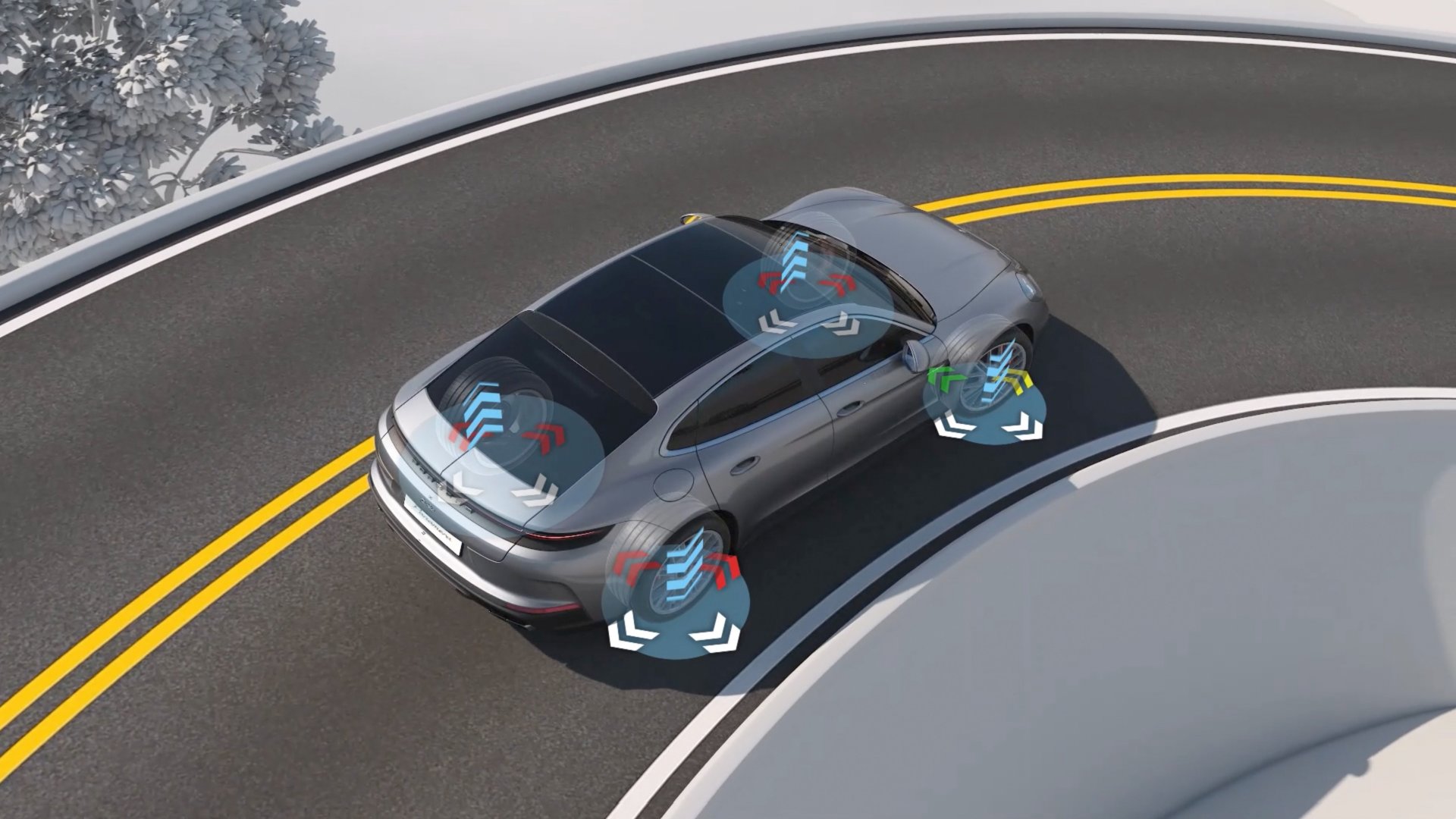
Nio's Sky Ride suspension in the ET9 takes a middle ground, showcasing the advancements being made by Chinese automakers in ride and handling. While not as outlandish as BYD's system, it demonstrates a clear focus on improving the overall driving experience.
These contrasting approaches highlight the exciting future of active suspension technology. Whether the focus is on unparalleled comfort and handling like Porsche, defying expectations like BYD, or striking a balance like Nio, one thing is clear: the game is on.
The Future of Ride: When Electrification Meets Innovation

The convergence of high-voltage electrical systems in mild hybrids, strong hybrids, plug-in hybrids (PHEVs), and EVs with sophisticated active suspension systems like Porsche's Active Ride is unlocking a whole new realm of possibilities in ride dynamics and chassis control. Imagine a future where even affordable vehicles offer a level of comfort and handling previously reserved for high-end luxury cars. This isn't just wishful thinking; the building blocks are already in place.
The trickle-down effect is inevitable. Expect to see elements of Porsche's groundbreaking technology filtering down to other vehicles within the Volkswagen Group (VAG), including iconic brands like Bentley, Lamborghini, and even sportier Audis. This democratization of active suspension will transform the driving experience across the board, offering a new level of control, comfort, and confidence to drivers everywhere.
At the end, please tell me your thoughts and comments about Porsche Panamera's new game-changing technology by clicking on the Add Your Comment red link below.
Author Bio
Bhavik Sreenath is an automotive expert, writer, and founder of Motolog Studio. With a Master's in Automotive Journalism and experience in publications like Bodyshop Magazine, he delivers compelling stories about the cars we love. From designing magazine layouts to reporting on eco-conscious practices, he brings a multifaceted perspective to automotive writing. His experience in Automotive Journalism makes him a vocal voice for car enthusiasts and industry insiders. Follow Bhavik on X, LinkedIn, Instagram, and Facebook, to stay in touch and up-to-date with the latest EV and battery development news.

